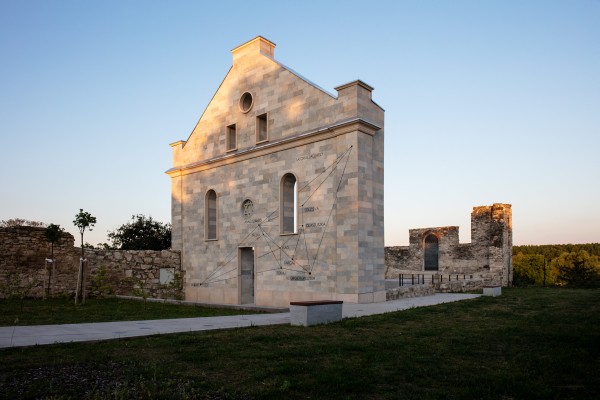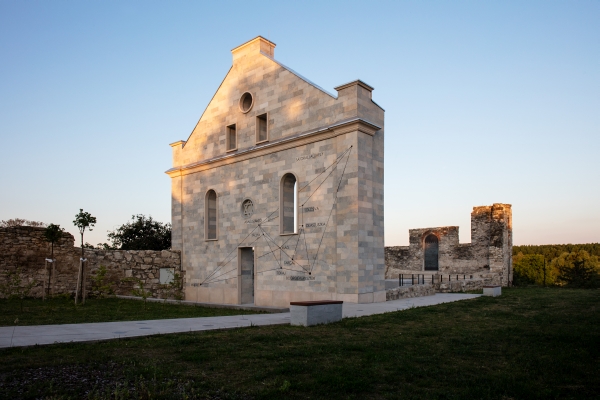Worlds Evolving Out of Wall Fragments
Holocaust Memorial Wall, Olaszliszka
Architects: Zsolt Szécsi, Ágnes M. Juhász
Art concept: Anna Baróthy, Bálint Tóth, Dalma Faddi
Text: Marianna Berényi
Photos: Tamás Bujnovszky

Located in the Hegyalja region, Olaszliszka used to have a fairly large Jewish community. Its the architectural heritage, the synagogue built by Friedmann Hersele (1808–1874), the famous rabbi of miracles has deteriorated by now to such an extent that it is destroyed now. The memorial site now constructed here is not only a bow of respect to the victims, a community sentenced to death, but also an architectural-artistic project, which elevates the relics of the former site into the material world. Designers did not build or close down the site opening up throughout decades with walls or roofs again. By the 21st century it is only certain parts of the eastern wall and the remains of the Torah storing niche that have survived. Architects made the original sizes of the building perceptible by rebuilding the western wall. As a result, visitors can also clearly feel the distinction between the interior and exterior without having the roofing above. In the middle of the surviving eastern wall there is the Torah storing niche in which concrete sculpturesque pieces made by Andrea Hári and Dóra Szeidl evoke the Torah curtains: their Hebrew-language message focusses on the importance of commemoration: „Write this on a scroll as something to be remembered” (Moses2,17:14). The newly built wall features the names of the 63 families members of which were deported on April 14th, 1944. Owing to the illumination of the site at night, even the floor exposed to and under the open skies turns into a metaphor: visitors evoking memories here walk on such an image of the sky where the bright lights showing the constellation of stars actually reveal the act of deporting people: carved into stone here is the constellation belonging to the exact time when this place was deprived of its community.
Arhitecture: Zsolt Szécsi, Ágnes M. Juhász – Örökségvédelmi Tervező és Szolgáltató Kft.
Art concept: Anna Baróthy, Bálint Tóth, Dalma Faddi – S’39 Hybrid Design Manufaktúra
Main contractor: Laki Épületszobrász Zrt, T-Komfort Kft.
Art design: S’39 Hybrid Design Manufaktúra
Client: Egységes Magyarországi Izraelita Hitközség







